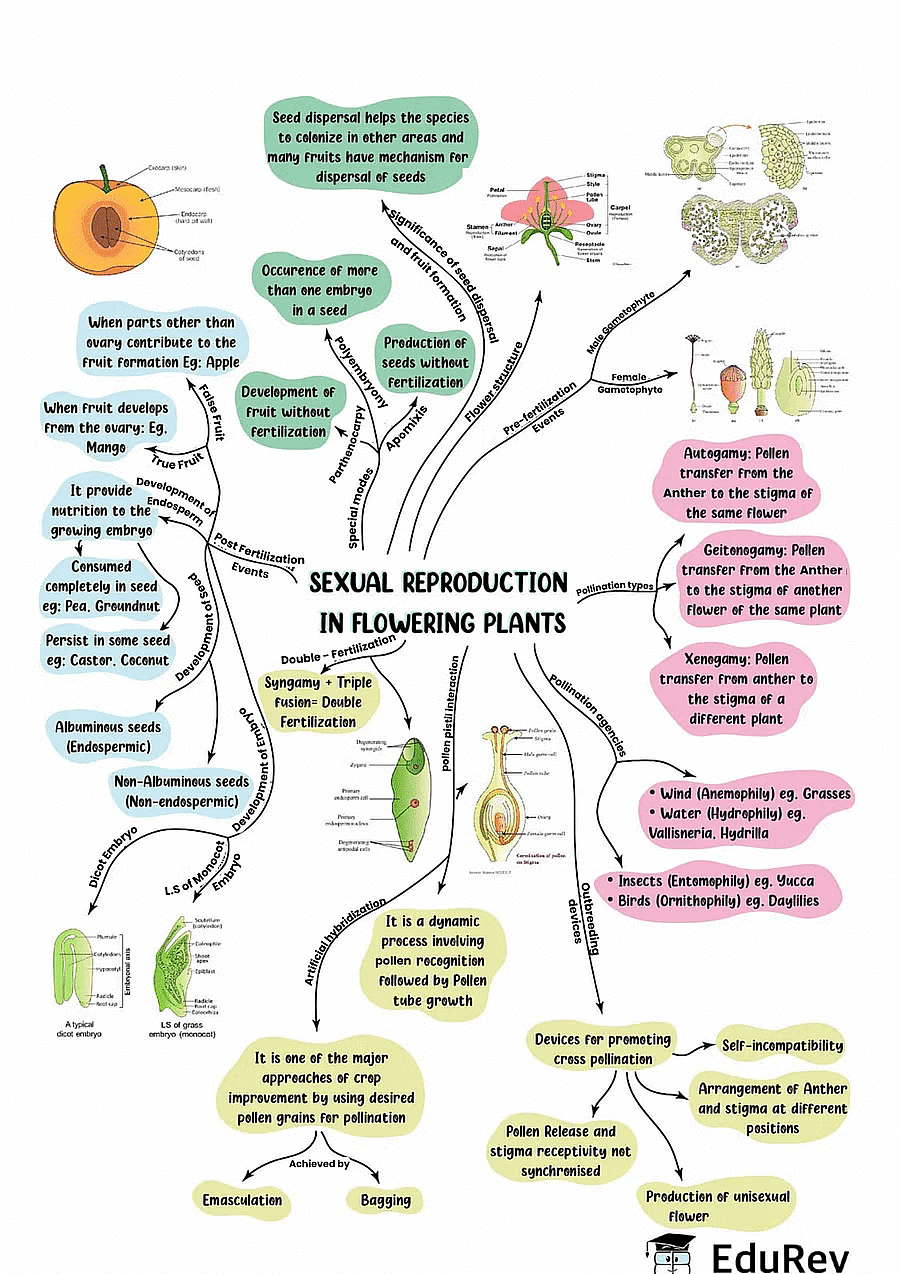NEET Exam > NEET Notes > Biology Class 12 > Mind Map: Sexual Reproduction in Flowering Plants
Mind Map: Sexual Reproduction in Flowering Plants | Biology Class 12 - NEET PDF Download

The document Mind Map: Sexual Reproduction in Flowering Plants | Biology Class 12 - NEET is a part of the NEET Course Biology Class 12.
All you need of NEET at this link: NEET
|
59 videos|290 docs|168 tests
|
FAQs on Mind Map: Sexual Reproduction in Flowering Plants - Biology Class 12 - NEET
| 1. What is sexual reproduction in flowering plants? |  |
Ans. Sexual reproduction in flowering plants is the process by which two parent plants, typically a male and a female, contribute genetic material to produce offspring. It involves the fusion of male and female gametes, resulting in the formation of seeds and fruits.
| 2. How do flowering plants reproduce sexually? |  |
Ans. Flowering plants reproduce sexually through a process called pollination. Pollen grains, which contain male gametes, are transferred from the anther of the male reproductive organ (stamen) to the stigma of the female reproductive organ (pistil). The male gametes then travel down the style and fertilize the female gametes within the ovary, leading to the formation of seeds.
| 3. What are the advantages of sexual reproduction in flowering plants? |  |
Ans. Sexual reproduction in flowering plants offers several advantages. It allows for genetic variation, as offspring inherit a combination of traits from both parent plants. This variation increases the chances of survival in changing environments and helps plants adapt to different conditions. Sexual reproduction also promotes genetic diversity, which is important for the long-term survival of a species.
| 4. Can flowering plants reproduce asexually as well? |  |
Ans. Yes, flowering plants can also reproduce asexually. Asexual reproduction in plants involves the production of new individuals without the involvement of gametes or fertilization. It can occur through various methods such as vegetative propagation, where new plants are formed from stems, roots, or leaves of the parent plant. Asexual reproduction allows plants to rapidly produce genetically identical offspring, ensuring the preservation of favorable traits.
| 5. How do flowering plants ensure successful pollination? |  |
Ans. Flowering plants have evolved various mechanisms to ensure successful pollination. These include the production of attractive flowers, nectar, and scents to attract pollinators such as bees, butterflies, and birds. Some plants also have specialized structures, like spurs or landing platforms, to facilitate pollinator access. Additionally, flowers may exhibit specific adaptations, such as the production of pollen grains with unique shapes or structures, to enhance the chances of pollen transfer and fertilization.
Related Searches






















